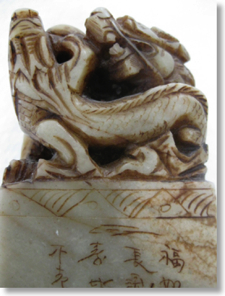
Teaching Experience
In 1991, Reiki was unknown inside the halls of most hospitals. As Maggie Chambers, I taught with Libby Barnett for twelve years. We were pioneers introducing Reiki into hospitals, hospices, and medical schools throughout the eastern United States. These sites include the Yale School of Nursing, New Haven, CT; New York Columbia-Presbyterian Hospital; New York Foundling Hospital; Dartmouth-Hitchcock Medical Center, Dartmouth, NH; Tufts School of Medicine, Boston, MA; Englewood Hospital, Englewood, NJ; Brown University’s Alpert Medical School, Providence, RI. We initiated Reiki into enough medical institutions of distinction to help break the ice. By 2000, we were joined by other Reiki Masters who carried the experience of this “energy medicine” into more hospitals. Reiki cannot yet claim full acceptance in the field of allopathic medicine, but that is not for its inability to produce astonishing outcomes. Some fraction of the mainstream medical community is still clamoring for double blind peer reviewed studies. Some research has been conducted, and more is being designed. Meanwhile Reiki continues to garner respect by sheer force of its consistent, quiet results.
Dartmouth Hitchcock Medical Center
When we taught the first Reiki class at Dartmouth Hitchcock in 1993, Reiki was seen as odd and unproven. The director of continuing nursing education directed us to use the back door of the Hospital where our entrance and exit would be discreet. Today Dartmouth Hitchcock’s Norris Cotton Cancer Center offers Reiki to cancer patients receiving chemotherapy:
http://cancer.dartmouth.edu/support_services/reiki.html
New York Foundling Hospital
When we taught at the New York Foundling Hospital through the early 1990s, the hospital administration was uncomfortable endorsing such an unproven modality as Reiki. Virginia Morabito, RN, who was dedicated to her staff and the children in her care, was determined to get us in to teach her staff, and she had to exercise discretion and subtle misdirection to manage it. Today the Foundling Hospital has a well-established Reiki program.
Columbia-Presbyterian Hospital
Also in the 1990s, we taught the first Reiki class offered to pediatric oncology staff at New York-Presbyterian. The class was comprised of technicians and nurses who were desperate to find something to ease the pain and distress of their young patients. During class they were eventually able to put aside their skepticism. While doing their homework following class, their results with themselves and spouses were tangible. The first day back in the hospital they reported the ease with which they were able to find the veins for IVs. They were surprised and impressed with the dramatic shift in their experiences.
Today the Herbert Irving Child and Adolescent Oncology Center’s website (at
http://nyp.org/enews/adolescent-oncology.html) describes its Reiki program in “Integrative Therapies Program for Children with Cancer” this way:
“The first of its kind to mainstream complementary medicine… Services such as nutrition and herbal counseling, aromatherapy, acupressure, acupuncture, Reiki, yoga and movement, massage, and guided imagery are provided ‘without walls’ as practitioners care for patients both on the inpatient and outpatient units.”










































